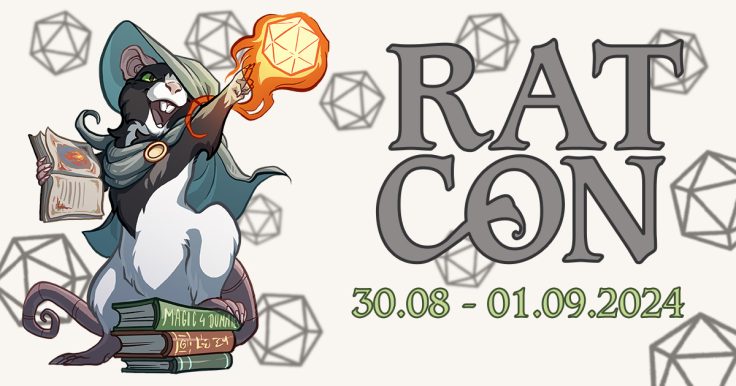Myth Orphans of Ovenstein – News Update June 2024

Hello there for another deep dive into the rules of the upcoming Myth Orphans of Ovenstein box. This time we take a look at Stances and Attack Resolution.
There are 3 stances in total: Undecided, Cautious, and Aggressive. The heroes enter combat in the Undecided stance and are reset to Undecided during the Refresh Phase at the end of each round. While in Undecided stance, a hero may play Action Cards normally and profit from all regular card effects, but they don’t gain any of the Stance bonuses (to the left of the card illustration). The advantage of the Undecided stance is its flexibility, as during each Attack Resolution, you may decide to set the stance to Cautious or Aggressive instead. Once you decided on one of those two stances, you immediately gain the corresponding Stance bonus. However, your hero will then stay in this stance for the remainder of the round, until it is set back to Undecided during the next Refresh Phase.
The Cautious and Aggressive stance are the real meat and potatos of the game. Not only do they confer significant bonuses (including valuable Exertion Points for movement and tasks), they also set the scene for what the hero will do during the round. They interact on many levels with the game, depending on the situation, the hero in general, and the cards you have on your hand at that specific time. Some hero classes tend toward the Cautious stance, others toward the Aggressive stance, but its always worth weighing the odds given the situation. In other words: When you make that decision on which stance to take is when you really plan out your whole round. At that moment, there is so much going on in your head. Enemy strength and position, where are your companions, what is their situation, what is the goal you try to achieve, and of course, what are the odds for success, and is there any Plan B if things go awry? At that moment, you’re feeling it—you’re playing the game!
Deciding on a Stance is part of the Card Resolution, and to do that, you first need to play an Action Card from your hand. But if you want to attack, you cannot just pick any card, it has to be a card with an Attack Box below the card illustration. Those boxes are an easy way to distinguish cards that provide you with an attack. The Attack Box also determines the Damage and Range of the attack, in other words: these two values depend largely on the Action Card you play, and not so much on the item you use for the attack.
Of course, you also need to have an appropriate item equipped in your Primary and/or Secondary item slot (your left and right hand). The rules go like this: In order to perform an Action Card’s attack, at least one of the keywords on the card must correspond to a keyword on an item in either your Primary or Secondary slot. Once that is confirmed, you gain the Combat Pool bonuses of all of your equipped items, but for the Primary and Secondary slot, the item there must additionally have at least one keyword in common with the Action Card.
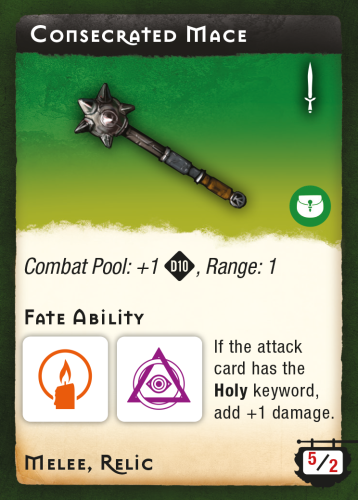
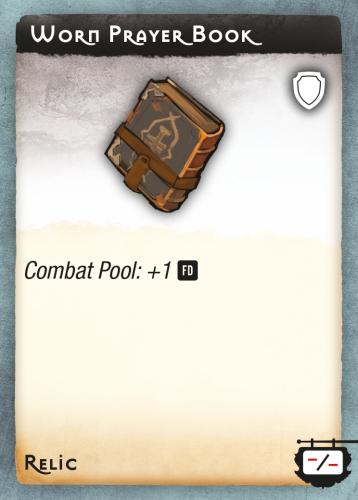
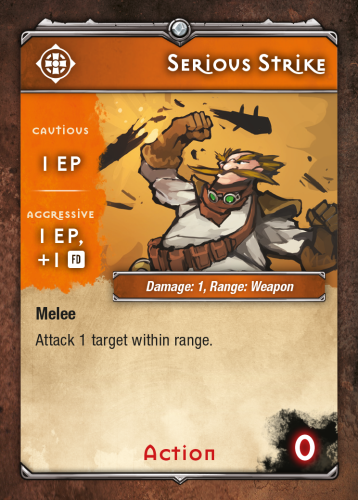
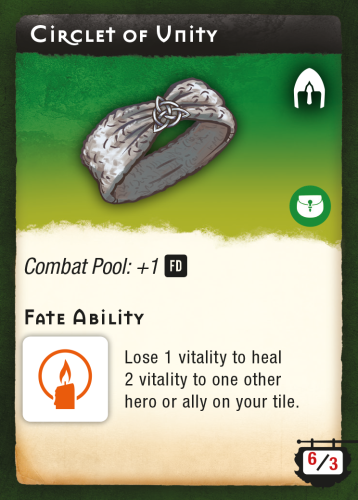
Lets illustrate that with the following example: The Acolyte plays the card “Serious Strike.” They have the item cards “Consecrated Mace,” “Worn Prayer Book,” and “Circlet of Unity” equipped. Serious Strike has the Melee keyword, and the Consecrated Mace in the Primary Slot also has that keyword, so the attack can take place. For tactical reasons, the Acolyte decides on the Cautious stance and gains no combat bonuses, but the Consecrated Mace confers +1 Hit Die and the Circlet of Unity (in the Helm slot, so it doesn’t require a corresponding keyword) +1 Fate Die. The Worn Prayer Book in the Secondary Slot on the other hand has no keyword in common with the Serious Strike, so it doesn’t provide its bonus to the attack.
We hope this little excursion into the world of Myth helps you understand how the game works and makes you excited for the upcoming box. We certainly are—the tactical depth is amazing! As usual, if you have any questions or special requests, please let us know!

